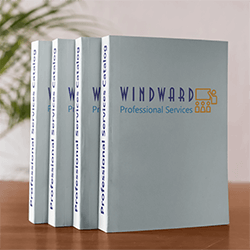Zebra printers are normally 203 dots per inch when you are working with the scale.
Below is information on how the blank label is referenced and fields are positioned.
(it's possible for some models the origin (0,0) in relation to the print orientation could differ and you would have to adjust your thinking appropriately).
• PDF page 10 / Manual page 1-4
Example & Common commands:
Example Label code
N q304 Q203 D7 B65,10,0,1,1,3,50,B,"<BARCODE,-1>" A65,100,0,2,1,1,N,"<DESCRIPTION,15>" A65,130,0,2,1,1,N,"<LIST,-1>" P1
Printing Barcode vs. Barcode Numbers
There has also been some confusion regarding the Barcode text lines and actual Barcodes. The System Five field <barcode> is the same, but the information to print the barcode number, or the barcode is completely different. For printing just the barcode number on a label, you will need to tell the printer what font you want to print as well as the size, orientation, and position on the label.
But for a barcode, you need to supply different information, such as the barcode type (3of9, 128, or UPC), the height and width of the barcode, and the position on the label.
So please carefully read the information in the examples below.
Example Label code with explanation
N - Clear buffer for the start of new label
q304 - Set width to 304 dots (304/203 = 1.5 inches approx.)
Q203 - Set height to 203 dots (203/203 = 1.0 inch)
D7 - set print density (darkness) to 7
B65,10,0,1,1,3,50,B,”<BARCODE,-1>“ - Print a barcode at origin 65,10, no rotation, barcode symbology #1 (code 128), narrow bar width 1, wide bar width 3, height 50 dots, Human readable, using the complete contents of the BARCODE value from System 5
A65,100,0,2,1,1,N,”<DESCRIPTION,15>“ - Print text at origin 65,100 with no rotation, font number 2, 1x width, 1x height multipliers, no reverse text and containing the first 15 characters from the System 5 Description field
A65,130,0,2,1,1,N,”<LIST,-1>“ - Print text at origin 65,130 with no rotation, font number 2, 1x width, 1x height multipliers, no reverse text and containing the entire List price from the System 5
P1 - Print 1 label set
Printing on Jewelry Tags, Barbell Tags, or Odd Shaped Tags
https://support.zebra.com/cpws/docs/eltron/epl_jewel.htm
Line Wrapping
From version 6.1.0.1 up, System Five now supports the wrapping of a text field onto multiple lines. All earlier versions of System Five would only allow printing a single line of text, which would be truncated when it reached the far edge of the label, or it would wrap back overtop of itself when it ran out of room. So in order to take advantage of this new enhancement, you will need to upgrade to the current release if you are not already on 6.1.0.1.
The most common use for this enhancement would be to have a description field that contains a long description to be printed on multiple lines. Also, this enhancement looks for spaces in the field so that words are not broken and separated onto another line.
To make use of this feature, you would no longer use the field <DESCRIPTION>, which is for a single-line description. Instead, you would substitute the field <DESCRIPTION#1> for each line needed to accommodate your long description. Here is an example of a 2.25-inch x .75-inch label utilizing two lines for the description “Skid Mount Turf Sprayer - Diaphragm”. You will also notice that the entire word “Diaphragm” was carried down to the second line, instead of breaking it at 35 characters.
N q456 Q145 A19,20,0,4,1,1,N,"<PART,-1>" B19,50,0,1,2,2,50,N,"<BARCODE,-1>" A19,102,0,2,1,1,N,"<DESCRIPTION#1,35>" A19,120,0,2,1,1,N,"<DESCRIPTION#1,35>" P1
In this example, we have also limited the number of characters per line to 35.
If your label requires two separate description fields with word wrapping (say for a two-part label or label with a tear-off section), you would use <DESCRIPTION#1> for the first description fields, and <DESCRIPTION#2> for the second description fields.
System Five Label Code Fields
https://wiki.windwardsoftware.com/doku.php?id=barcode_and_text_fields
== Created By Jason Kirby September 17 2008 ==
== Updated By Steve Wind June 10 2021 ==






